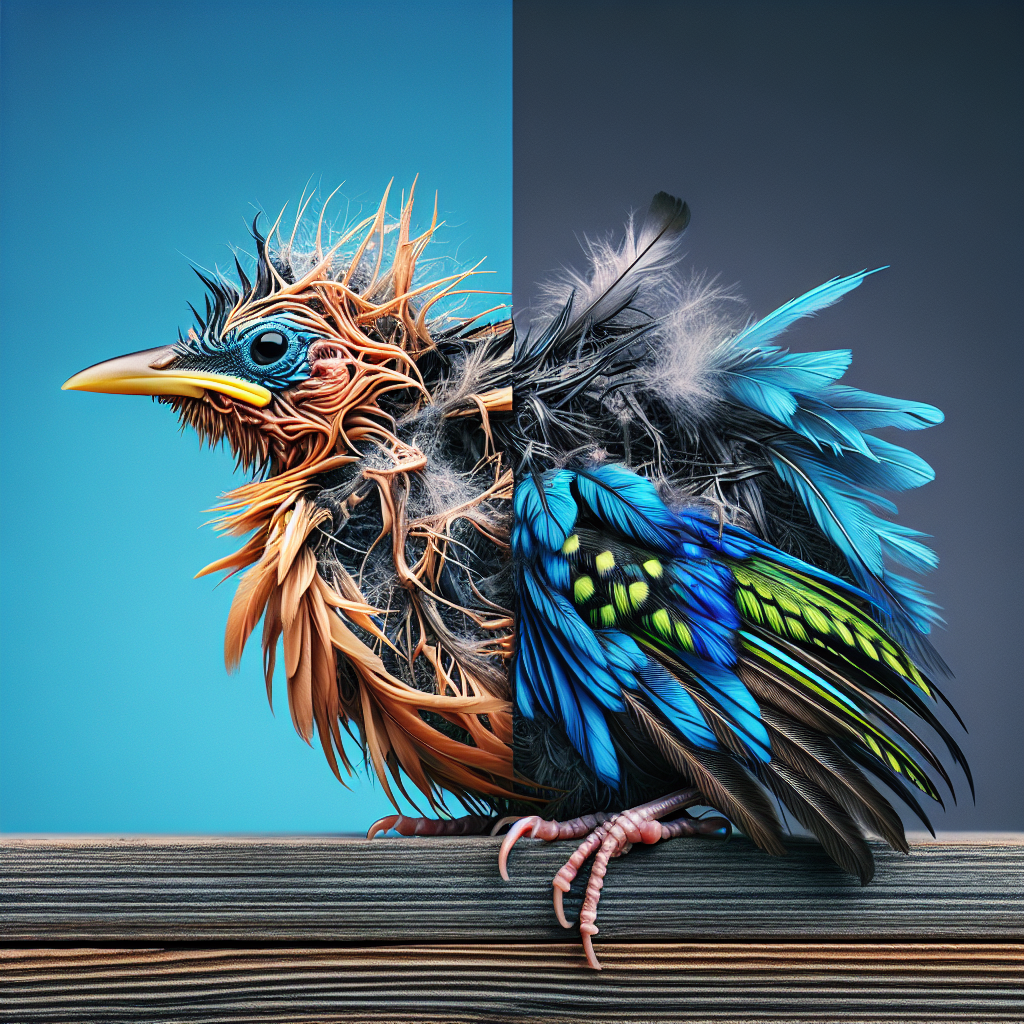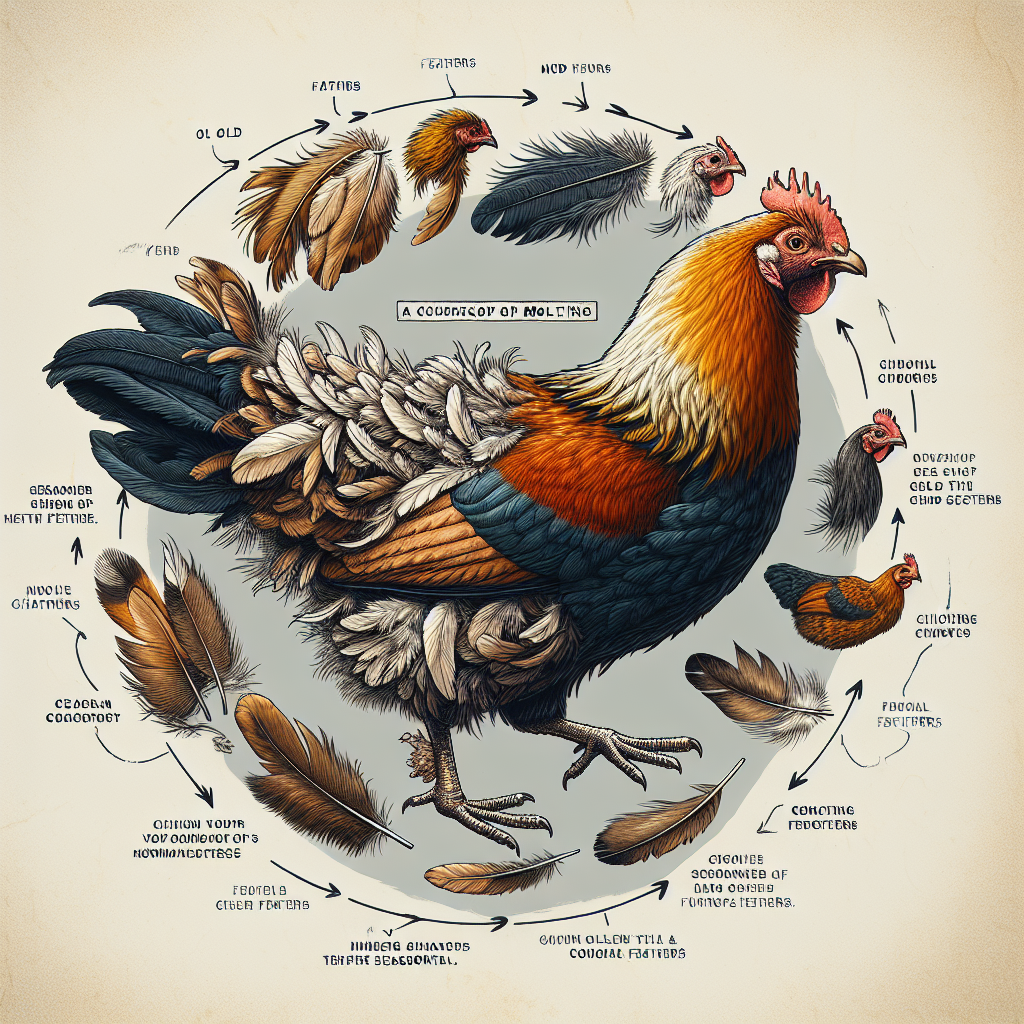Have you ever wondered how to tell the difference between normal molting and potential health problems causing feather loss in your bird? Whether you’re a seasoned bird owner or a newcomer to avian companionship, it’s essential to understand the signs and symptoms of both situations. By gaining this knowledge, you can ensure the well-being and happiness of your feathered friend. In this article, we will explore the key differences between normal molting and health issues causing feather loss, empowering you to provide the best care for your beloved bird.
Understanding Normal Molting
Definition of Molting
Molting, also known as the molting cycle or the molt, is a natural process in which birds shed their old feathers and grow new ones. It is a vital part of a bird’s life cycle and plays a crucial role in maintaining their overall health and well-being. During molting, the bird’s feathers gradually fall out, making way for fresh plumage to grow in their place. This process allows birds to renew and rejuvenate their feathers, ensuring optimal flight, insulation, and protection.
Frequency and Timing of Molting
The frequency and timing of molting vary among different bird species. However, in most cases, birds molt at least once a year, typically during the autumn or winter months. This timing is beneficial as it allows the new feathers to grow and mature before the arrival of the breeding season in spring. It is important to note that certain bird species, particularly those living in extreme climates, may undergo two molting periods per year to adapt to changing weather conditions.
Signs of Normal Molting
Different birds display varying signs of normal molting. Some common indicators include minor feather loss, patchy appearance, and increased preening behavior. You may notice feathers scattered around their living area or clinging to their beaks as they groom themselves more frequently. Additionally, you may observe a temporary decrease in the bird’s activity levels and appetite during this time. It is important to remember that these signs are normal and should not cause alarm, as they indicate that your bird is going through a natural and healthy molting process.
Identifying Health Issues Causing Feather Loss
Common Health Problems Leading to Feather Loss
While molting is a natural process, there are certain health issues that can cause excessive feather loss or abnormal patterns. These underlying health problems may include nutritional deficiencies, parasitic infestations, fungal or bacterial infections, hormonal imbalances, or autoimmune disorders. Identifying and addressing these issues promptly is crucial to ensure your bird’s well-being.
Signs of Health Issues Causing Feather Loss
When health issues are causing feather loss, you may notice certain red flags that differentiate it from normal molting. Excessive bald spots, bleeding or irritated skin, abnormal behavior such as constant scratching or discomfort, changes in weight or appetite, or a sudden deterioration in overall appearance and energy levels can indicate an underlying health problem. It is essential to be vigilant and seek professional help if you suspect that your bird’s feather loss may be attributed to a health issue.
Seeking Professional Help
If you suspect that your bird’s feather loss is not a result of normal molting, it is important to consult a veterinarian who specializes in avian health. An avian expert can conduct a thorough examination and run diagnostic tests to identify the underlying cause of the feather loss. With their expertise and experience, they can provide the necessary treatment or recommend further investigations, if needed. Remember, addressing health issues promptly can significantly improve your bird’s chances of recovery and minimize discomfort.
Determining the Cause
Observation and Assessment
To determine the cause of feather loss, careful observation and assessment are crucial. Take note of any changes in your bird’s behavior, appearance, or environment. Observe how your bird interacts with its surroundings, the presence of any abnormal discharge, or the presence of parasites. Furthermore, pay attention to any recent changes in diet, exposure to potential stressors, or encounters with new birds or animals. These observations can provide valuable insights into potential factors contributing to the feather loss.
Keeping a Record
Maintaining a record of your bird’s feather loss can be helpful in the diagnostic process. Document any changes in the pattern, severity, or duration of the feather loss. Note the date when the feather loss began, any observed improvements or exacerbations, and any treatments or interventions implemented. This record can assist your avian veterinarian in making an accurate diagnosis and developing an appropriate treatment plan.
Consulting Avian Experts
When dealing with feather loss, it is wise to seek guidance from avian experts. Avian veterinarians have specialized knowledge and training in the unique needs and medical conditions of birds. They can perform a detailed physical examination, order laboratory tests if necessary, and provide expert guidance on the most suitable course of action. Consulting with avian experts ensures that your bird receives the best care and increases the likelihood of determining the precise cause of feather loss.
Preventing Feather Loss
Proper Nutrition and Diet
Ensuring your bird receives a balanced and nutritious diet is crucial in preventing feather loss and maintaining overall health. Provide a wide variety of fresh fruits, vegetables, and leafy greens, along with high-quality commercial bird pellets. Additionally, supplement their diet with appropriate amounts of protein from sources such as lean meat, eggs, or legumes. Consult with a veterinarian to ensure that your bird’s nutritional needs are met based on its species and individual requirements.
Environmental Factors
Creating a suitable environment for your bird is essential in preventing feather loss. Ensure that their living area is clean, well-ventilated, and free from drafts. Provide appropriate perches, cage materials, and toys to promote mental stimulation and physical activity. Regularly clean and inspect the bird’s living space for any potential irritants, such as dust, strong detergents, or allergens. Maintaining a stress-free and comfortable environment can significantly reduce the risk of feather loss.
Regular Veterinary Check-ups
Regular visits to an avian veterinarian are crucial in maintaining your bird’s overall health and detecting any potential issues early on. Your veterinarian can conduct routine check-ups, assess feather quality, perform necessary tests, and provide preventative care. They can also offer guidance on optimizing your bird’s environment, diet, and overall well-being. By scheduling regular veterinary check-ups, you play an active role in preventing health issues that could lead to feather loss.
In summary, understanding the difference between normal molting and health issues causing feather loss is essential for ensuring the well-being of your avian companion. By familiarizing yourself with the signs, common health problems, and preventative measures, you can provide the necessary care and seek professional help when needed. Remember, a healthy plumage is a reflection of a healthy bird, and with the right knowledge and proactive approach, you can help your feathered friend thrive.




